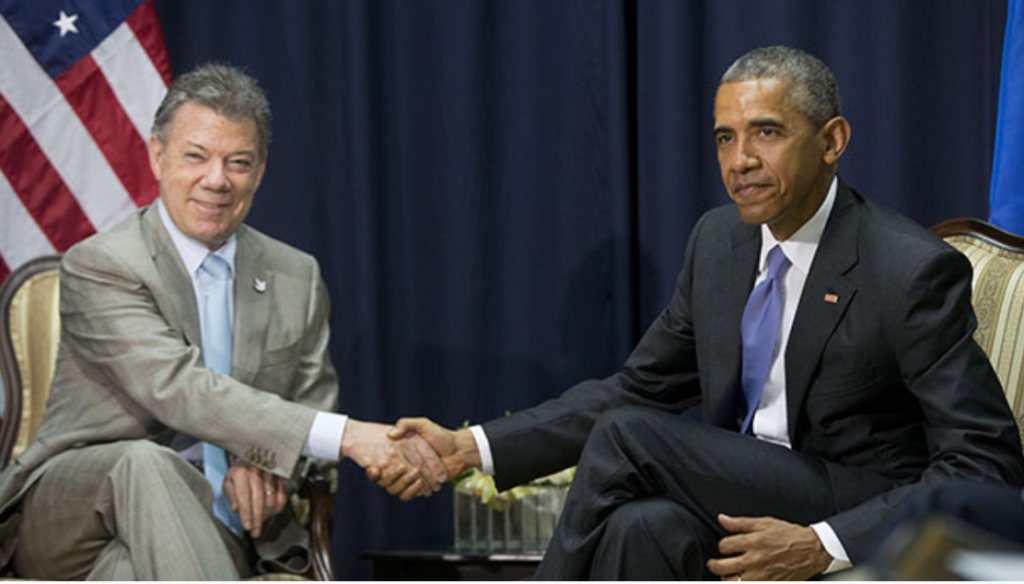Colombia and U.S Conditional Foreign Aid

Image Courtesy of Center for American Progress
By MaggieMae Dethlefsen
Due to shared concerns about security, drug trafficking, and regional stability, the United States and Colombia have had a long-standing strategic partnership. The United States does not, however, give Colombia unrestricted help. Both countries’ foreign policy are greatly influenced by this aid, which is frequently subject to certain requirements. It affects not only bilateral relations but also more general geopolitical dynamics.
Starting in the 1990s, the U.S. has been a major provider of military assistance and financial backing to Colombia. An important moment in this relationship happened in 1999 with the start of Plan Colombia, an initiative with the goal of reducing drug production, and human trafficking and strengthening Colombian security forces. Colombia continues to receive aid as long as they continue to meet the conditions that are in place.
As long as Colombia continues to make progress and improve on implementing the 2016 Peace Accords, we will continue to give aid to them. But are they really holding up their end of the conditions to get the aid we continue sending over to them?
As of 2024, Colombia is still one of the largest producers of coca and other raw materials for cocaine. This is also one of the country’s major forces of instability and violence. Though Colombia has made progress, it is uneven and inconsistent. The cultivation of cocaine is also on the rise again, and aerial spraying and manual eradication efforts of coca plants have put a hold on the long ongoing progress of lowering coca cultivation.
In addition, Colombia continues to confront high rates of violence, especially in rural and border areas with prevalent narcotics trafficking organizations, guerrilla groups, and paramilitaries. Reports in recent years indicate that Colombia is trying to prosecute human trafficking cases more and protect victims better, with law enforcement agencies collaborating more effectively, but human trafficking for sexual exploitation and forced labor remains a grave concern.
This violence is largely driven by the drug trade since the criminal groups that fight for control of the routes and areas of coca cultivation often employ extremely violent tactics against the civilian population: kidnappings, extortions, and the forced displacement of the population. And while Colombia has impressively reduced overall homicide rates, having many successes in improving security in urban centers, in the most drug-producing regions, violence is surging, making drugs and human trafficking even more difficult to address.
The US has remained a key partner, funding anti-trafficking programs and supporting human rights in Colombia, but the very basic issue of narcotics-related violence serves to fuel trafficking and broader instability, hindering comprehensive solutions. Until Colombia can effectively stabilize such high-risk areas and cut the link between narcotics trafficking and organized violence, improvements in human trafficking will continue to be slight, embedding the problems associated with narcotics further.
While it continues to work on critical issues related to narcotics production, human trafficking, and violence, Colombia does not fully meet the conditions described above. While there was some progress, notably in the area of law enforcement cooperation, reduction in coca cultivation, and pursuit of a peace process with former FARC fighters, progress was inconsistent, and key benchmarks were unmet. U.S. aid almost always comes with strings: that drug production shows a measurable reduction, human rights are better enforced, and criminal organizations are more effectively taken down.
As of 2024, all these tasks remain highly challenging for Colombia. Coca cultivation has increased over recent years; no sustainable reduction in production has taken place despite large-scale eradication. Outbreaks of violence have risen in drug-producing areas, where new armed groups have occupied the vacuum left by the demobilization of the FARC.
These circumstances have worsened the scale of drug trafficking and human rights violations, such as the murder of social leaders and former combatants. The U.S. also has grown more critical of how Colombia handled many of these topics, especially since the Colombian government’s move toward alternative policies on drugs and decriminalization ran in conflict with the U.S. goal of aggressive anti-narcotics policies. Furthermore, while the Santos Administration has made initial efforts to combat human trafficking, impunity for criminal organizations continues to mark large parts of the country, making it impossible for Colombia to fully meet U.S. standards on human rights.
Since some improvements have occurred in Colombia, the country is not in complete alignment with the key conditions for renewal of aid, thus straining the bilateral relationship and raising questions about the long-term effectiveness of current approaches.
Here on the Catholic University of America’s campus, there is a chance to hear more about this in Maloney Hall 204 on November 6, 2024, where students from Dr. Love’s Foreign Policy class will be talking more about this in depth.







